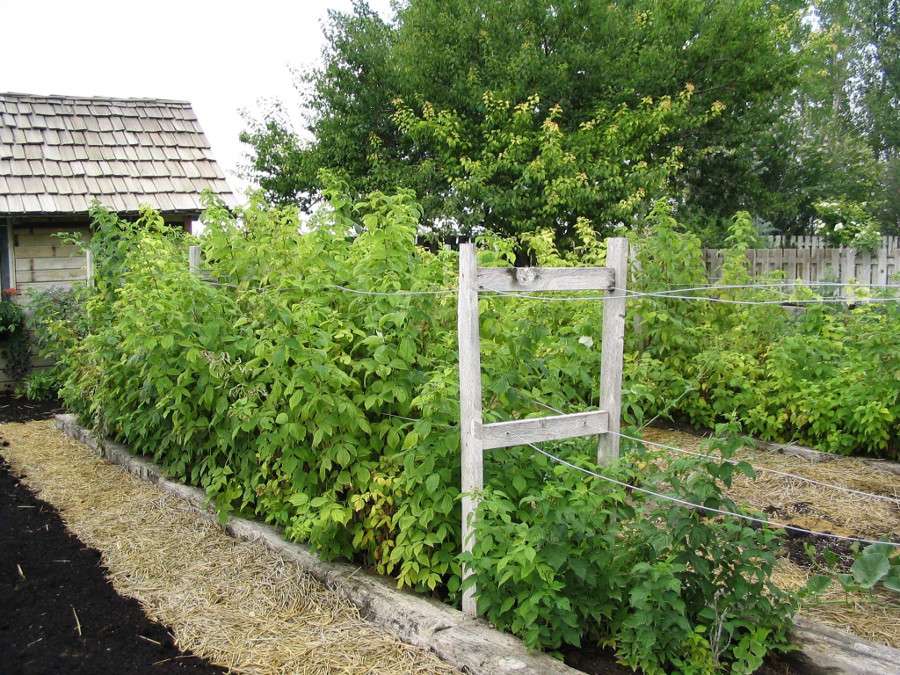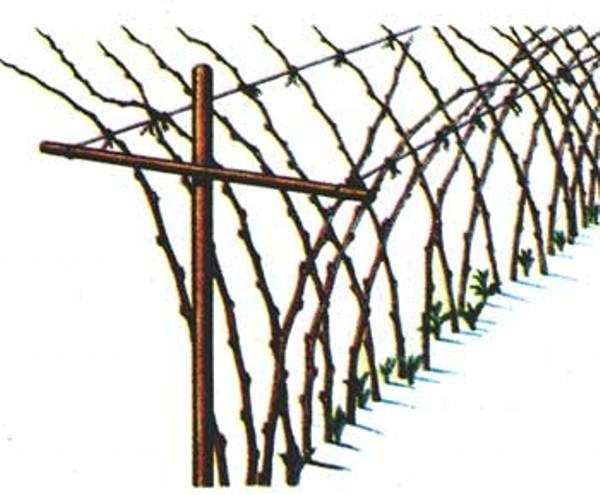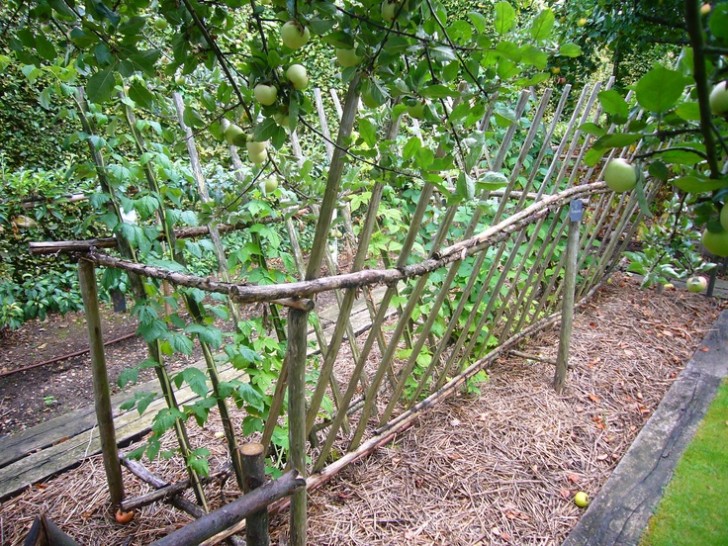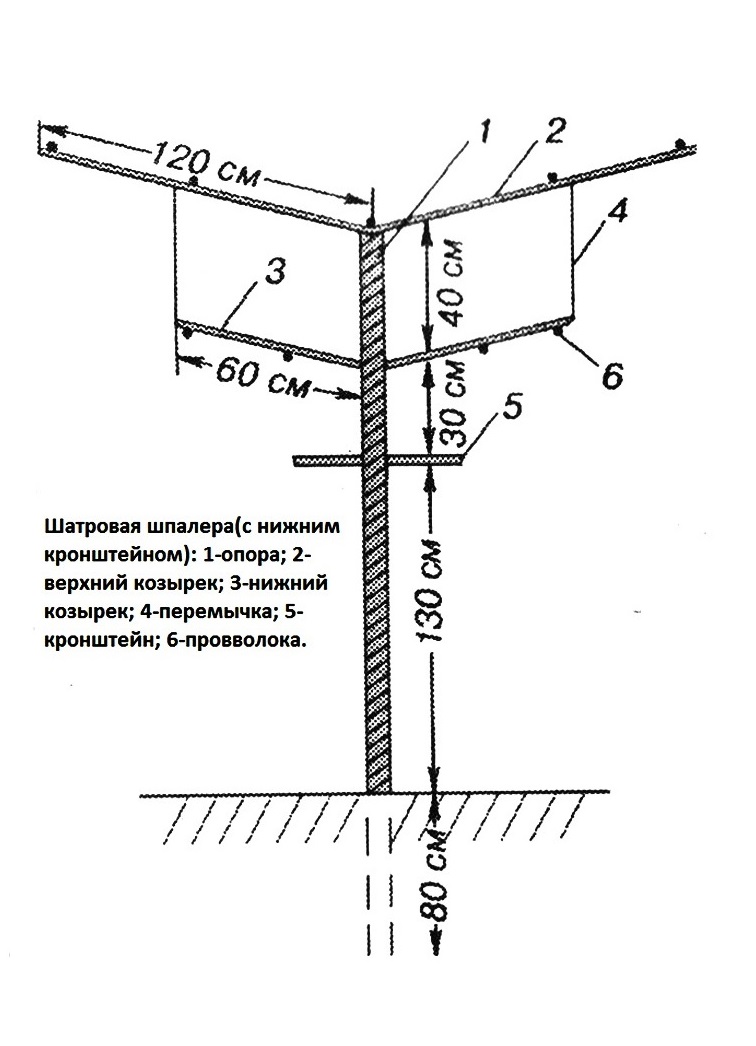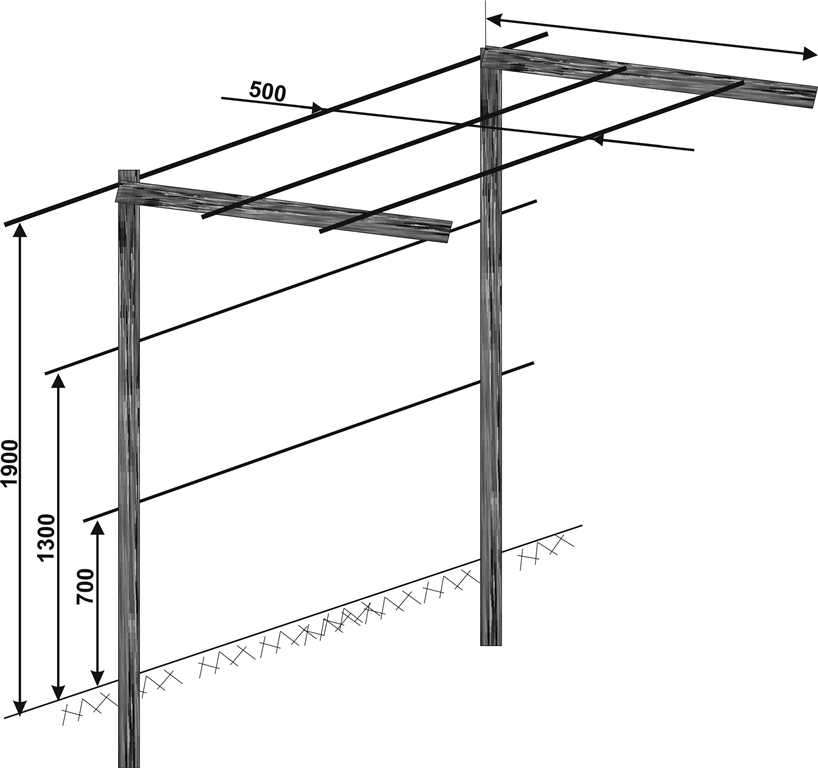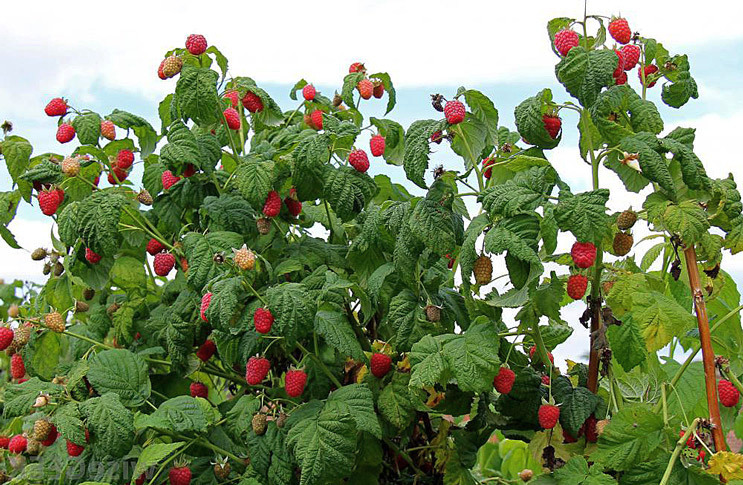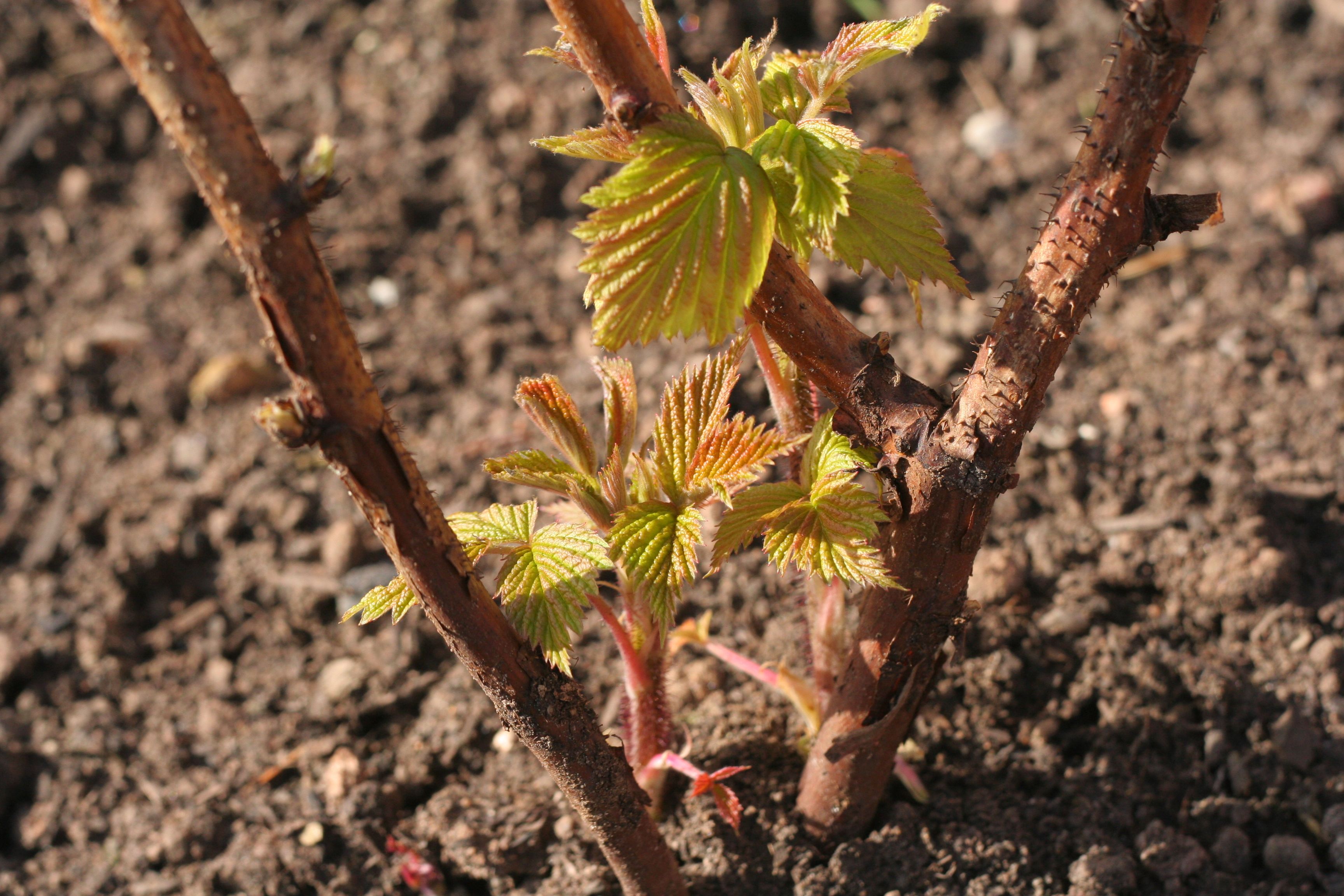Content:
The ripening process of the crop can overload the raspberry tree - the pride of any gardener, as a result of which it bends down under the influence of gusts of wind. Taking care of the berry becomes more difficult. Many gardeners are solving this situation by resorting to the use of such an agricultural technique as fixing raspberry bush plantings on supporting supports.
The role and purpose of tapestries
The support is a trellis for raspberries, tying on which will have a beneficial effect on the quantitative indicator of yield, which can also be said about the yield of such a garden crop as blackberries. However, some novice gardeners prefer to use trellises for tying raspberry bushes to fix plantings on ringed supports or without them at all, managing to achieve good yields from time to time. Still, such an agronomic technique can give a positive effect when growing exceptionally low-growing varietal raspberries, the erect stems of the bush of which are of considerable thickness, and the size of the berry fruits is not too large.
Most of the varietal varieties of raspberries existing today have an impressive shoot length, which can reach two meters. Each such shoot has no less long fruit branches, the thickness of which does not allow them to maintain the correct position under the weight of the harvest. Knowing how to correctly make a trellis for raspberries with your own hands, you can install this structure in a raspberry grove, where the bush plantings form rows. After installing it, large fruits, under the influence of gusts of wind, will not tilt the raspberry bushes to the ground. However, single raspberry plantations, located far from each other throughout the entire garden plot, should be fixed to other types of barriers.
The advantages of trellis structures
The advantages of using the arrangement of a trellis fence when breeding raspberry bush plantings on a large scale:
- contact of the lower tier of branches with the ground surface is not allowed, due to which the branches remain clean;
- lack of contact of fruits with the soil helps them not to get dirty after rain;
- ensuring proper ventilation of the bushes prevents the spread of fungal infectious diseases;
- uniform illumination of raspberries contributes to their high-quality ripening.
Thanks to the installation of trellis devices, it becomes easier for the gardener to take care of the raspberry tree, namely:
- trim and remove shoots that have completed fruiting;
- watering and mulching the soil;
- harvest;
- prepare the site for the winter season.
Another convenience of the trellis fastening method is the durability of use, provided that it is properly constructed.
Trellis designs
A trellis is a certain number of pillars arranged linearly in a row, covered with several layers of wire. Tapestries are divided into two types:
- single-lane;
- two-lane.
Despite the lower efficiency of single-plane trellises, knowledgeable summer residents find them used in planting areas with a limited area.
Single-strip trellis
Types of single-strip trellis, whose function is to hold raspberry bushes between supports in the form of pillars covered with twine:
- fan;
- vertical flat;
- free;
- inclined;
- horizontal.
The structure of the structure of supports covered with wire or twine is the same for all species, as is the role of fastening bush plantings at the vegetative stage of development. An exception is the horizontal type of trellis, the work with which requires observance of some nuances. The above varieties differ in the methods of tying raspberry bushes.
A horizontal trellis is used to prepare raspberry plantings for the winter season. Having installed a horizontal trellis, at the beginning of the spring season, last year's shoots are bent to the ground surface and fixed in a horizontal position. This method of forming bush plantings is aimed at facilitating the procedure for covering raspberry beds for the winter.
In the presence of a small number of beds for raspberries, you can use any of the presented types of single-strip trellis. The negative point is that all stems require separate fixing. For application on large raspberry plantations, this method is considered too time consuming.
Two-lane trellis
Two-lane trellis are considered to be improved and are used on a large scale. The list of existing schemes of two-lane trellis:
- T-shaped;
- V-shaped;
- Y-shaped;
- hipped horizontal.
In addition to fixing ripening berry plantings, a two-lane trellis helps to properly organize the placement of raspberry plantings. This is a wire stretched in two rows, keeping them parallel. The approximate distance between the wires is 1 meter.
T-shaped trellis
It is possible to make a T-shaped trellis structure, creating a kind of box for raspberries, from reinforcement fragments, bars or pipes made of metal, fixed perpendicularly. The tension points of the wire are the extreme area of the prevailing horizontal part of the trellis structure. When forming bushes in the raspberry bed, fruiting shoots should be placed in the opposite direction, freeing up the central area for young shoots.
Named in the same way as two-lane inclined, this type of structure consists in placing two inclined planes. The method of forming the beds is carried out in a similar way for the T-shaped trellis.
V-shaped trellis
Placement of the fence in the form of V-shaped trellises is organized in the center of the row. The slope is set to 20 degrees. Each side is wrapped in two rows of wire.
Y-shaped trellis
The modernized design - raspberry support, includes the presence of such details as movable blades, fixed in a hinged way. The Y-shaped design allows the tilt angle to be adjusted by raising or lowering the paddle elements.
Hip horizontal trellis
Such a trellis is installed with the expectation of harvesting with machinery. Gardeners do not use this design because of the difficult access to the aisles, problems with keeping branches with raspberry berries, complicating the process of mulching, pruning and fertilizing.
Tapestry for remontant varieties
A trellis holder for remontant raspberries must be installed, since remontant varietal raspberries are capable of bringing such an amount of harvest that, unable to bear the weight of the fruit, most of the berries will lie on the ground.
Height measurement and other calculations
The universal height for trellises is considered to be two meters; it is suitable for any variety. When installing trellis supports, it is necessary to give them a stable position, which is ensured by the additional height of the trellis, which is approximately 80 centimeters, which is dug into the ground.
The average distance between the supporting elements of the trellis structure is two meters, however, the exact calculation when drawing up the drawing is carried out based on:
- indicators of durability, altitude characteristics, the size of the diameter of the used building materials;
- the length of the rows;
- method of fastening bush plantings;
- the degree of tension of the ropes.
The raspberry garter is carried out by fastening at two points using one of the existing methods, which is selected based on the agronomic indicators of the variety. For tall varieties, the garter of the first row of shoots is carried out at the level of a meter, the next one - 1.5 meters higher. The first row of medium-sized varieties is tied at a height of half a meter, the second - at a level of 1.3 meters.
The list of building materials used for the construction of the rack of trellis supports:
- wood beams and pieces in the form of bars;
- cut pipes;
- fittings.
How to independently design a trellis
Having picked up a type of support for raspberries, you should mark the landing area, having decided on the installation distance of the support pillars, after which you can proceed to the installation work, following the step-by-step instructions:
- Each of the ends of the wooden blocks undergoes a special impregnation or brightening treatment. This should be done to prevent rotting of part of the pillars buried in the ground. The pillars of the tree should not have a smaller diameter than 15 centimeters. To prevent corrosion, metal fragments in contact with the soil surface are also recommended to be processed;
- Tapestries of T-shaped and Y-shaped structures are installed on pre-assembled supports of the required shape;
- Digging holes is carried out;
- A shovel should be used to install the trellis supports that create a raspberry fence;
- Pull the prepared wire in two rows. To install a fence in confined areas, it is allowed to use a reinforced twine, subject to the minimum distance.
Having found out how to make a do-it-yourself raspberry trellis in the right way, one should remember the advantages of this agro-construction. Installation of such innovative gardening devices as a trellis fence will expand the varietal assortment grown in the country. Despite the laboriousness of the installation of trellis structures, the time spent will justify itself in the future by increasing the yield of the raspberry tree and saving time for care and harvesting.
